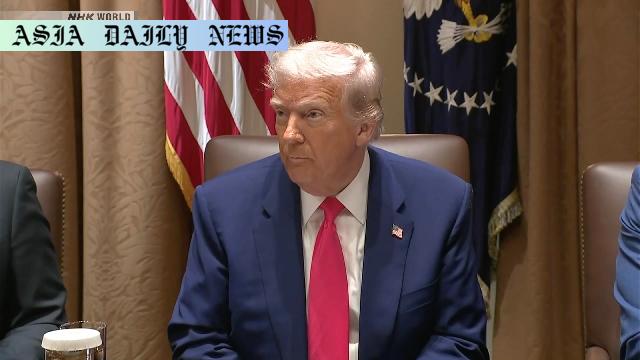Tariffs: US President Donald Trump announces sweeping tariffs on 12 countries, targeting global trade with rates up to 70%.

Trump’s Bold Stance on Trade Tariffs
On Friday, US President Donald Trump announced a significant move in global trade dynamics by signing letters that impose tariffs on 12 countries. While the exact nations remain undisclosed, these tariffs are projected to range from as high as 70% to as low as 10%, with implementations set to begin on August 1. The letters, which are expected to arrive on Monday, signify the administration’s firm stance on ensuring reciprocal trade agreements.
This strategy is in alignment with Trump’s long-standing perspective on eliminating what he perceives as unfair trade imbalances. By targeting key trade partners, his administration aims to secure better terms for American businesses. In Friday’s statement to reporters, Trump highlighted the different tariff rates and indicated that negotiations may still be ongoing for some agreements. With reciprocal tariffs on pause until Wednesday, this move represents a crucial moment in reshaping trade policies.
Impact of Tariff Rates on Global Trade
The implementation of these tariffs could have wide-ranging implications for global trade. Countries affected by these measures will face increased export costs to the US, potentially leading to reduced competitiveness in the American market. Conversely, these tariffs may provide opportunities for American manufacturers to expand their market share domestically. However, the move risks sparking retaliatory measures from major trade partners, potentially escalating to broader trade conflicts.
By instituting tariff rates as high as 70%, the US could pressure foreign nations to renegotiate existing terms. This bold tactic is not without risks, as adversely impacted economies may pursue legal actions through the World Trade Organization or other trade bodies. Nonetheless, the administration expresses confidence that their strategy will yield substantial economic benefits for the United States.
Immediate and Long-term Economic Implications
As the August 1 deadline approaches, businesses across various sectors will be carefully evaluating the impact of these tariffs. Industries heavily reliant on imports from the targeted countries may face increased costs, leading to potential price hikes for consumers. Furthermore, retaliatory tariffs on US exports could create challenges for industries like agriculture and manufacturing, which heavily depend on global markets.
In the long term, these tariffs could encourage more localized production and supply chain diversification. For the US, this could lead to significant job growth and economic revitalization. On the other hand, the potential strain on international relations poses a significant risk to global stability. Ultimately, the success of these measures will depend on the precise execution and response from the affected nations.
Commentary
Trump’s Tariff Plan: Will It Backfire or Reap Rewards?
The sweeping trade tariffs announced by President Trump bring a wave of changes to how the US engages with its trade partners. On one hand, the administration’s pursuit of more equitable trade agreements offers a glimmer of hope for US industries seeking a level playing field. However, such a drastic approach also carries significant risks for both the domestic and global economy.
Imposing tariffs as high as 70% is a bold, albeit contentious, move. For potential supporters, this signifies an aggressive strategy to deter unfair trading practices and foster local industry growth. Yet, skeptics argue that these measures may result in higher prices for American consumers and provoke retaliatory actions. The fine line between protecting domestic interests and antagonizing trade allies is precarious, demanding prudent navigation.
Global Implications Demand Measured Responses
Countries caught in the crosshairs of these tariffs are unlikely to take such measures lightly. Retaliation in the form of counter-tariffs or other economic sanctions could shift the dynamics further, potentially triggering a global trade war. This scenario poses significant challenges for global economic stability, leaving businesses and consumers grappling with the aftermath.
Nevertheless, this announcement may serve as a catalyst for renegotiation and compromise. If handled diplomatically, it could lead to a revised and more balanced global trade framework. The onus lies on the US and its trade partners to steer this move towards cooperation rather than confrontation.
A Bold Gamble on Economic Strategy
In conclusion, Trump’s tariff policy represents a high-stakes gamble with the potential for significant economic rewards or costly repercussions. While it underscores the administration’s commitment to fostering fair trade for the US, the broader ramifications of such policies on a global scale remain uncertain. Moving forward, effective communication, strategic planning, and diplomatic tact will be essential in ensuring this ambitious approach yields positive outcomes for all stakeholders.


